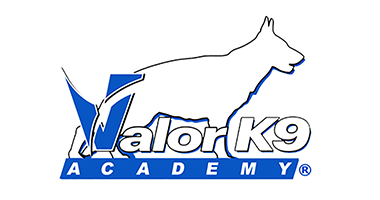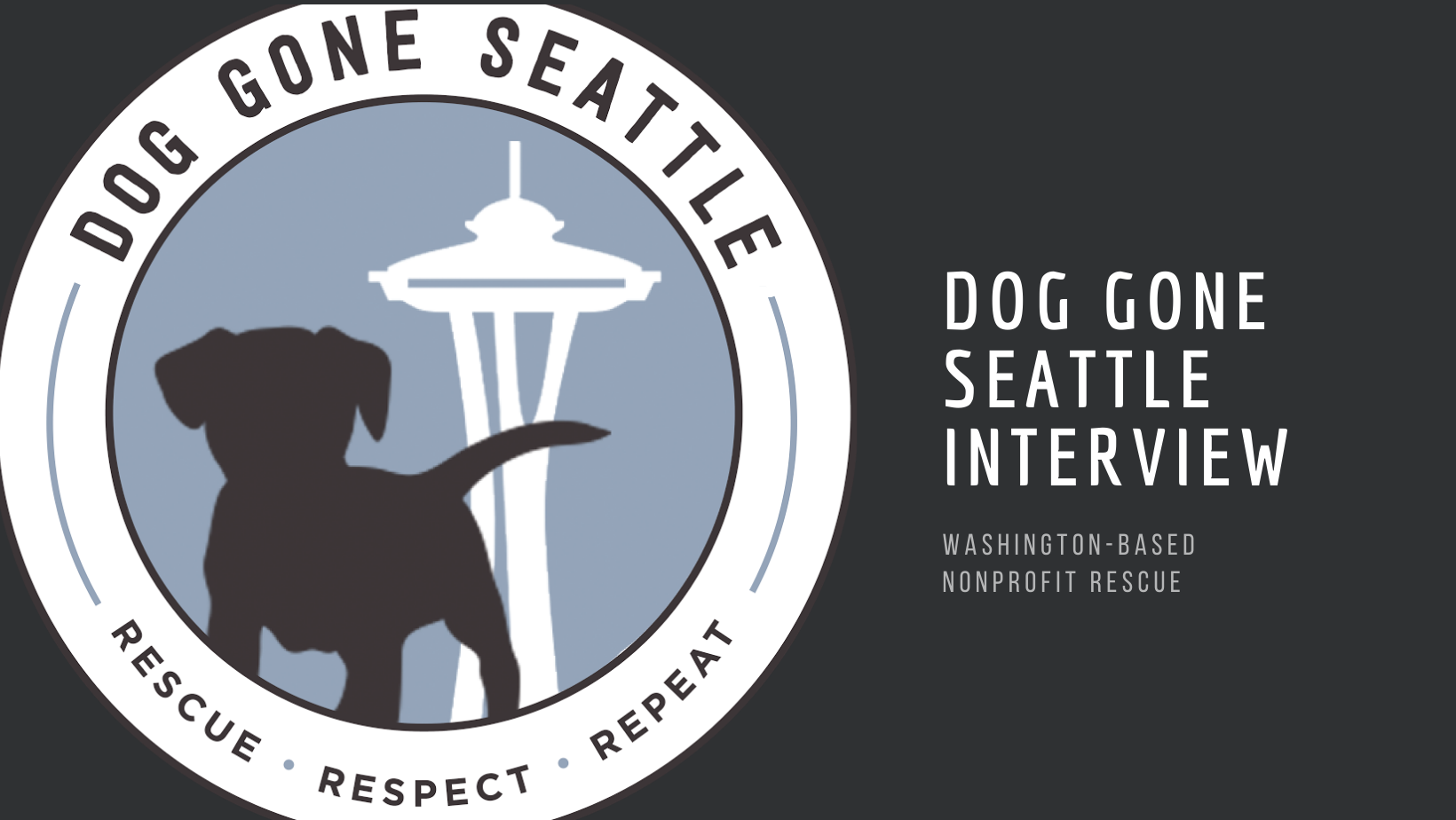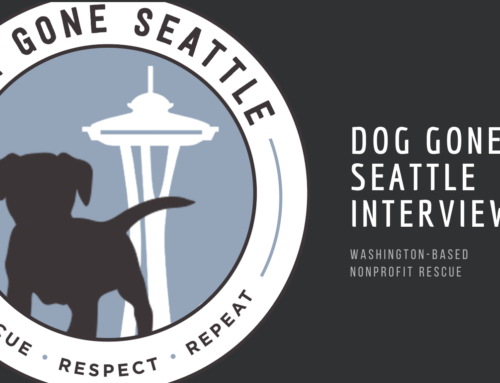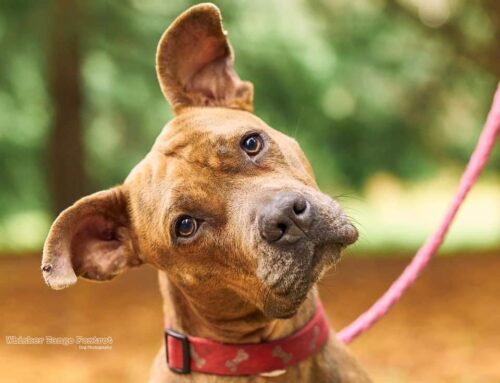Dog Gone Seattle is an amazing dog rescue nonprofit organization located in Seattle, WA. They save homeless dogs in high-kill shelters through rescue, foster and adoption. We have worked with DGS in the past not only by training their dogs in foster care, but also by teaming up with them for a seminar back in 2018. They are an awesome group of passionate, dedicated individuals!
In this article, I interview Dog Gone Seattle Founder and Director, Jenny Nordin, about the ins and outs of her rescue. She generously gave me such great and lengthy answers that I decided to break it into two articles. Here’s part 1!
1. Dog Gone Seattle is such a fun name. How did you pick it?
The capstone class in my grad school program involved building an online community around a blog and connected social media channels. Passionate about animal rescue, I decided my blog would be “www.whyadopt.com” featuring heart wrenching stories of dogs in need, and compelling shelter statistics. My professor dismissed this idea as too depressing to hold an audience and challenged me to come up with a more engaging topic. While mulling it over in a dog-friendly coffee shop with my sidekick Doberman rescue Bondi, a patron remarked “Wow, I didn’t know you could bring dogs in here!” and it came to me that I would build an online resource for Seattle area dog owners to find and share dog-friendly establishments and activities. The name “Dog Gone Seattle” represented adventuring with your dog in the city, and in 2012 www.doggoneseattle.com (the blog) was born. Seattle area dog owners were buzzing over the website and corresponding social channels and in short order a community formed.
It’s funny how things have a way of coming full circle, because when in 2016 I decided to found a 501c3 dog rescue, I announced the change in mission to Dog Gone Seattle followers, saying “we hope you’ll stay but understand if you go!” I kept the name which I thought fit perfectly, since our dogs “gone to Seattle” to find forever homes. It was hugely advantageous to have an established virtual local community when starting out; I’m not sure we could have hit the ground running otherwise. I still heed my professor’s advice not be “too depressing” in our communications, and work hard to engender a fun and positive rescue community through support and shared experiences.
2. Where do most of your dogs come from?
The majority of our dogs come from overcrowded shelters in California, where adoptable dogs can be euthanized for space, and from out of state rescues that are unable to find quality homes for adoptable dogs in their area.
We partner with southern California shelters including Devore, San Bernadino City, Moreno Valley, Hesperia, and Riverside, among others.
We also transfer in dogs from Texas via Project Freedom Ride and partner directly with several rural rescue groups in Texas.
In our local community, we accept owner surrenders as well as behavior transfers of “unadoptable dogs” from local shelters and rescues that would benefit from an experienced foster home and training, when resources allow.
3. How has COVID-19 impacted rescue?
Thinking back to March 2020, which feels like a lifetime ago, I remember cancelling weekend adoption events one week at a time, certain this would all blow over. Then, airlines started cancelling flights and shelters implemented restrictions on volunteers coming in to evaluate dogs. We were facing significant impediments to our normal processes for getting dogs to Seattle. There was uncertainty around whether “animal rescue” constituted an “essential business” and I couldn’t get any clarification from the Governor’s office on this point. I discovered fine print that the transport of live animals (presumably for the food industry) qualified as an essential business — and I also happened to believe our business was pretty dang essential — so we forged ahead with our daily operations arranging for the rescue of homeless dogs in need, supporting fosters and finding suitable adoptive homes.
Meanwhile, employees were being sent to work from home or laid off in masses, and everyone and their mom decided it would be the perfect time to get a dog. Foster and adoption application volume increased ten-fold, yet we were working with the same core group of volunteer case managers. We worked hard to ramp up onboarding of fosters and intake of dogs. We pivoted and implemented policies to keep fosters and volunteers safe, such as contactless delivery of dogs into fosters’ vehicles and virtual home visits.
As we have adapted, ultimately the number of adoptable dogs and active fosters has increased. Adoptions are up. Donations are down. All in-person events, including our annual gala fundraiser, were cancelled. Now, here we are over a year later with a light at the end of the tunnel, and yet we’re holding our breath a little bit. In this unprecedented time, we have carefully placed dogs with families prepared for a long-term commitment versus a pandemic puppy; however, we do worry that many of these adopted dogs will struggle post-Covid with separation anxiety and/or behavior issues due to lack of socialization and formal training. I think this sense of foreboding is weighing heavily on rescues now.
4. How many dogs do you currently have awaiting adoption?
We currently have 85 dogs in foster homes with more than 50 available for adoption. Those who are not yet listed for adoption are on hold while receiving medical care or behavioral training. We receive new dogs multiple times a week. The process is a strict protocol of decompression for 72 hours, followed by several more days of observation in the foster home. After a week, the dog is usually listed for adoption on our website, provided there are no medical or behavioral issues that need attention. Then, a case manager reviews applications and schedules virtual and in person meet and greets for suitable potential adopters with foster families and adoptable dogs. The typical timeline from intake to adoption for dogs in our rescue is 3-4 weeks. Of course, some dogs take longer than others to find their forever homes, and the minimum time in foster care prior to adoption is 7 days. We just recently placed our longest resident dog Nacho, who was a transfer from Kauai Humane Society and with our rescue for 578 days!
5. Tell us about one of the dogs you have available right now for adoption!
So many special dogs to choose from, but Great Pyrenees mix Ross is a gem still waiting for his family. We rescued him in October 2020 from a property outside of San Bernadino with 30 dogs; all but Ross have found forever homes.
Video: https://www.youtube.com/watch?v=X-FaAQADs2w
When he arrived in Seattle, we noticed a limp and some bowel control issues. X-rays revealed serious old breaks in his femur and at the base of his tail, likely from being hit by a car. The leg had healed but the tail required amputation. While Ross is now pain free, the nerves at the base of his tail suffered irreparable damage so he does have some occasional fecal incontinence. We have managed this by feeding a raw diet which decreases the volume and frequency of poops. True to his breed, he loves to be outside, but when he lounges indoors he is content to wear a diaper!
Ross is a wonderful family dog who gets along with other dogs of all sizes, cats, livestock and kids. He is loyal to his family and would thrive with someone familiar with LSGDs and willing to manage his special medical needs.
6. You’re a foster based rescue. Would you like to give a shout-out to anyone?
Fosters are the backbone of our organization and we have too many wonderful fosters to even try to thank them all. At the moment, though, one special foster comes to mind — Melissa Brown. She has been with Dog Gone Seattle since the beginning and she is always willing to step up. She has taken in almost every breed, behavior dogs, and medical dogs but has a big heart for the bullies. She is currently fostering three adoptable dogs: Jimmy, a purebred Wheaten Terrier with a bad hip who had four failed adoptions before being transferred to DGS from Everett Animal Shelter for behavior; Noel, a male pitbull from Devore who for whatever reason has been waiting over four months for his family; and Salsa, a fearful cattle dog mix originally from Texas and transferred from a local shelter to DGS due to kennel stress.
Outside of her full time job at Microsoft and caring for her own resident dog, Melissa diligently supports her foster charges from intake and decompression through integration in her household and finally to adoption with patience, dedication, energy and enthusiasm. The kicker? For the last two months she has been doing this while her home is being remodeled, living in an RV. Talk about a Superhero!
Stay tuned for part 2 and the rest of the interview!















Leave A Comment